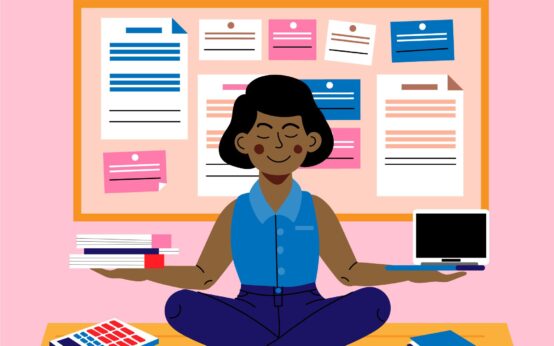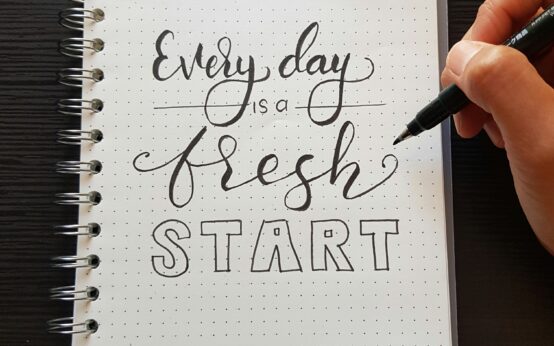Have you ever caught yourself lost in thoughts about the past or fretting about the future? Mindfulness might be just what you need to anchor yourself in the present. Let’s journey together into the world of mindfulness, exploring how you can practice it daily to enhance your well-being.
Understanding Mindfulness
Before incorporating mindfulness into your daily life, it’s essential to understand what it truly means. At its core, mindfulness is the practice of being present and fully engaged with the current moment without judgment. It’s about maintaining a moment-by-moment awareness of your thoughts, feelings, bodily sensations, and the surrounding environment
For a deeper understanding of how mindfulness can impact personal growth, you may also enjoy reading our article on Mindfulness and Personal Growth: How to Stay Present and Purposeful.
The Benefits of Mindfulness
Engaging in mindfulness practices regularly can lead to numerous positive outcomes. It can help reduce stress, improve your focus, and enhance emotional well-being. When you make mindfulness a habit, you’ll likely notice an improvement in your overall quality of life, including better sleep, increased patience, and greater resilience in face of challenges.
Studies have shown that mindfulness can lower anxiety levels and boost emotional regulation (Mayo Clinic)
The Science Behind Mindfulness
Mindfulness isn’t just a trendy buzzword; it’s backed by substantial scientific research. Research from the American Psychological Association has shown that mindfulness can increase gray matter density in brain regions linked with memory, emotion regulation, and perspective-taking. Additionally, it can lower the production of cortisol, the stress hormone, leading to a calmer and more centered state of mind.
Techniques to Practice Mindfulness Daily
Let’s explore some practical techniques that can help you incorporate mindfulness into your everyday routine. These techniques don’t require hours of practice; only a few minutes of your day can make a significant difference.
Mindful Breathing
One of the simplest, yet most effective ways to practice mindfulness is through mindful breathing. This technique requires you to focus entirely on your breath, noticing each inhale and exhale’s natural rhythm. When your mind begins to wander, gently bring your attention back to your breath. Consider setting aside five minutes daily to sit quietly and observe your breathing.
Learn how breathing techniques can reduce stress and improve energy in our post on Mindful Breathing and Stress Relief
Mindful Walking
Walking is something you do often, making it a perfect opportunity to practice mindfulness. Instead of dwelling on thoughts or allowing your mind to wander, direct your attention to the physical experience of walking. Pay attention to the sensation of your feet contacting the ground, the rhythm of your steps, and the movement of your body. This practice can transform a mundane walk into a refreshing, mindful experience.
Body Scan Meditation
A body scan meditation helps you develop greater awareness of physical sensations by mentally scanning your body from head to toe. As you focus on each body part, notice any sensations, tension, or discomfort you might be experiencing. This practice not only promotes relaxation but also helps you connect more deeply with your body’s needs.
Mindful Eating
In our fast-paced world, meals often become rushed and mindless. Mindful eating encourages you to slow down and savor each bite, paying attention to the flavors, textures, and aromas of your food. It encourages gratitude for the nourishment your meal provides and helps develop a healthier relationship with eating.
Loving-kindness Meditation
This meditation style centers around cultivating feelings of love and compassion for yourself and others. Begin by sitting comfortably and repeating phrases like “May I be happy, may I be healthy, may I be safe.” Gradually expand your focus to include loved ones, acquaintances, and even those you have conflicts with. This practice can enhance your overall sense of compassion and foster deeper connections with others.
Journaling with Intention
Keeping a mindful journal can be a powerful tool for reflection and insight. Set aside time each day to write about your thoughts, feelings, and experiences, actively engaging with your inner world. This practice helps reinforce mindfulness by promoting self-awareness and encouraging you to process your emotions with clarity and intention.

Overcoming Challenges in Mindfulness Practice
Like any new habit, there are challenges you might face when incorporating mindfulness into your daily life. Identifying and addressing these challenges can help you remain committed to your practice.
Dealing with Restlessness
You might find yourself feeling restless when you first begin practicing mindfulness. This is normal, and it’s important to remember that mindfulness is not about clearing your mind of all thoughts but rather observing and accepting them without judgment. With consistent practice, this restlessness will often diminish.
Staying Consistent
Consistency is key in developing any new habit, including mindfulness. Try setting aside specific times each day for your practice, such as first thing in the morning or before bed. Creating a routine makes it easier to stay committed and incorporate mindfulness into your daily life.
Creating a Morning Routine That Boosts Mental Clarity can help you integrate mindfulness seamlessly into your day.
Patience and Progress
Mindfulness is a skill that takes time to develop. Be patient with yourself, and avoid the temptation to rush your progress. Over time, you’ll likely notice subtle changes in your mindset and emotional well-being, which can serve as motivation to continue practicing.
Integrating Mindfulness into Various Aspects of Life
Mindfulness doesn’t have to be confined to short meditation sessions; it can be seamlessly integrated into various aspects of your daily life, enhancing your overall experience.
Mindful Communication
In conversations, practice listening attentively and responding thoughtfully. Be present with the person you’re talking to, focusing on their words rather than planning your next response. Mindful communication can deepen your relationships and foster a greater sense of understanding and empathy.
Mindfulness at Work
Workplaces can be stressful environments, making them ripe for the benefits of mindfulness. Take short breaks throughout the day to practice mindful breathing or take a quick walk. Practicing mindfulness at work can improve your focus, productivity, and ability to handle stress.
Learn more from Mindful.org’s guide to mindfulness at work.
Cultivating Gratitude
A gratitude practice can heighten your sense of mindfulness by helping you appreciate the present moment and its gifts. Each day, write down a few things you’re grateful for, no matter how small. This practice encourages you to focus on the positives and reinforces an overall sense of mindfulness and contentment.

Creating a Personalized Mindfulness Routine
Every individual’s mindfulness journey is unique. Finding a routine that works for you ensures that practicing mindfulness becomes a sustainable and rewarding aspect of your life.
Tailoring Your Practice
Reflect on your daily schedule and identify pockets of time when you can engage in mindfulness activities. Whether it’s during your morning coffee or as you wind down for bed, find what aligns with your lifestyle and preferences.
Leveraging Technology
In today’s digital age, there are numerous apps designed to assist with mindfulness practices. Apps like Headspace, Calm, and Insight Timer offer guided meditations, reminders, and tracks that can suit different preferences. Consider experimenting with other apps to find ones that complement your mindfulness journey.

Conclusion
Incorporating mindfulness into your daily life can significantly enhance your well-being and lead to a more fulfilling, present existence. By understanding the principles of mindfulness and exploring practical techniques, you’re better equipped to embrace the practice and experience its countless benefits. Remember, the key is to practice regularly and sincerely. Over time, you’ll find yourself more resilient, focused, and at peace with the world around you.
So, why not embark on this mindfulness journey today and experience the transformative power of living in the moment?

 10 Simple Self-Care Practices For Stress Relief
10 Simple Self-Care Practices For Stress Relief  How To Create A Mindfulness Routine For Beginners
How To Create A Mindfulness Routine For Beginners  The Best Mindfulness Apps To Enhance Your Practice
The Best Mindfulness Apps To Enhance Your Practice  How To Incorporate Self Care Into Your Daily Life
How To Incorporate Self Care Into Your Daily Life  The Ultimate Self-Care Checklist for Better Mental Health
The Ultimate Self-Care Checklist for Better Mental Health  Easy Self Care Ideas You Can Do at Home
Easy Self Care Ideas You Can Do at Home  How To Create A Skincare Routine For Oily Skin
How To Create A Skincare Routine For Oily Skin  The Best Ingredients For Anti-Aging Skincare
The Best Ingredients For Anti-Aging Skincare  Skincare Myths That Are Wrecking Your Glow
Skincare Myths That Are Wrecking Your Glow  Natural Skincare 101: Everything you Need to Know
Natural Skincare 101: Everything you Need to Know  The Ultimate Guide To Sunscreen: What You Need To Know
The Ultimate Guide To Sunscreen: What You Need To Know  Guide to the Best Anti acne Products for Clear Skin
Guide to the Best Anti acne Products for Clear Skin